الكويت

Small but oil-rich country at the top of the Gulf

Frequently but incorrectly referred to as a city-state, Kuwait sits at the northern end of the Arabian Gulf, in a precarious position between Saudi Arabia and Iraq. Kuwait became independent from the United Kingdom in 1961, at which point its oil production was already well underway. More recently it was the subject of the 1991 Gulf War, prior to which the country had suffered under the Iraqi occupation. Kuwait is often regarded as a very small country, however it is considerably larger than both Bahrain and Qatar combined.
I went to Kuwait for a January weekend visit while working in the UAE. I figured that while I was in the region, it would be a good opportunity to visit a place I wouldn’t have considered making a special trip to from the UK. I took a cheap flight with flyDubai early on a Friday morning, and had two full days with a rental car before heading back on the Saturday night. As interesting as it was, the country is not geared for tourism, so finding some of the attractions took much effort and ingenuity. It was also surprisingly cold!
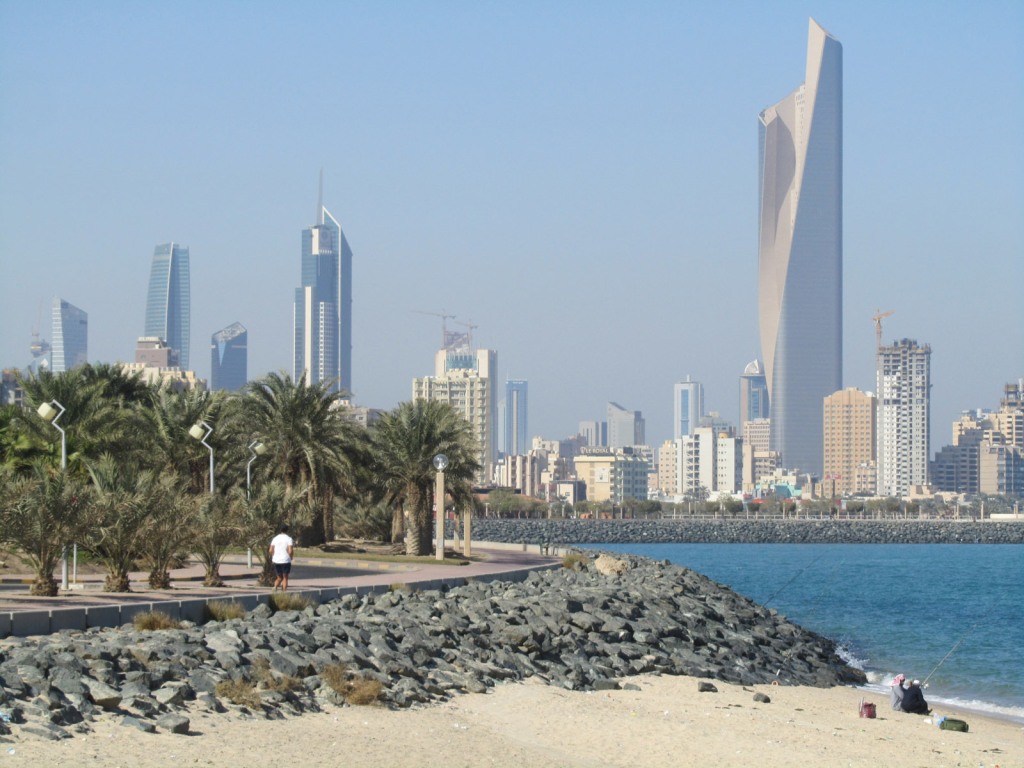
Like many Middle Eastern cities, Kuwait has its own corniche, a pretty waterfront boulevard with views across the Persian Gulf to the shiny towers of downtown. The tallest of these is Al Hamra Tower at 414 metres, and only just completed at the time of my visit.
However perhaps the most famous landmark is the Kuwait Towers, sitting at the extreme northeast tip of the city, they are an icon of the Gulf.


The Kuwait Towers were built in 1979, and contain a viewing gallery, café, restaurant and water tank. During the Iraqi occupation they were used as target practice and extensively vandalised, however as a national symbol they were quickly restored following the liberation. This is the view of the city from the observation deck.
The Kuwait National Assembly Building was designed by Joern Utzon, the same architect of Sydney Opera House fame. It opened in 1982.
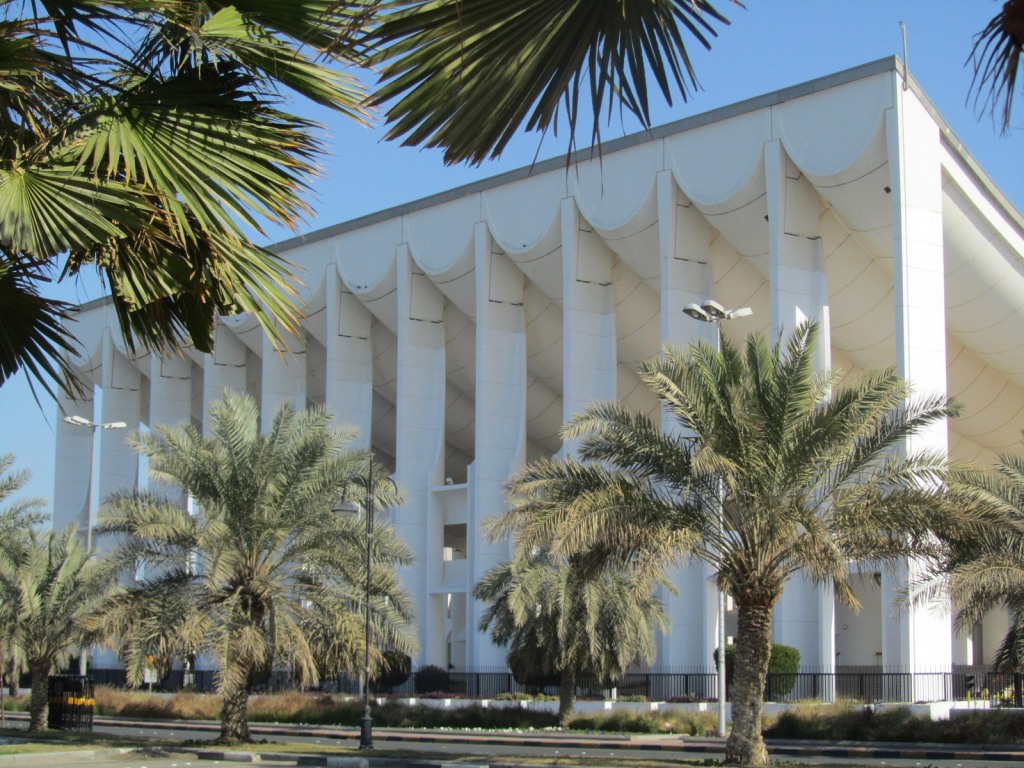

I took a trip to the Friday market in the hope of bartering for some camels – things have moved on a bit since then, however there is plenty of Arabic lounge gear for sale.
In order to keep up with its Gulf rivals as a shopping destination, Kuwait has built a number of glamourous new malls, such as Souq Sharq on the north coast of the city. Old fashioned wind tower styling contrasts with the yachts of the marina.
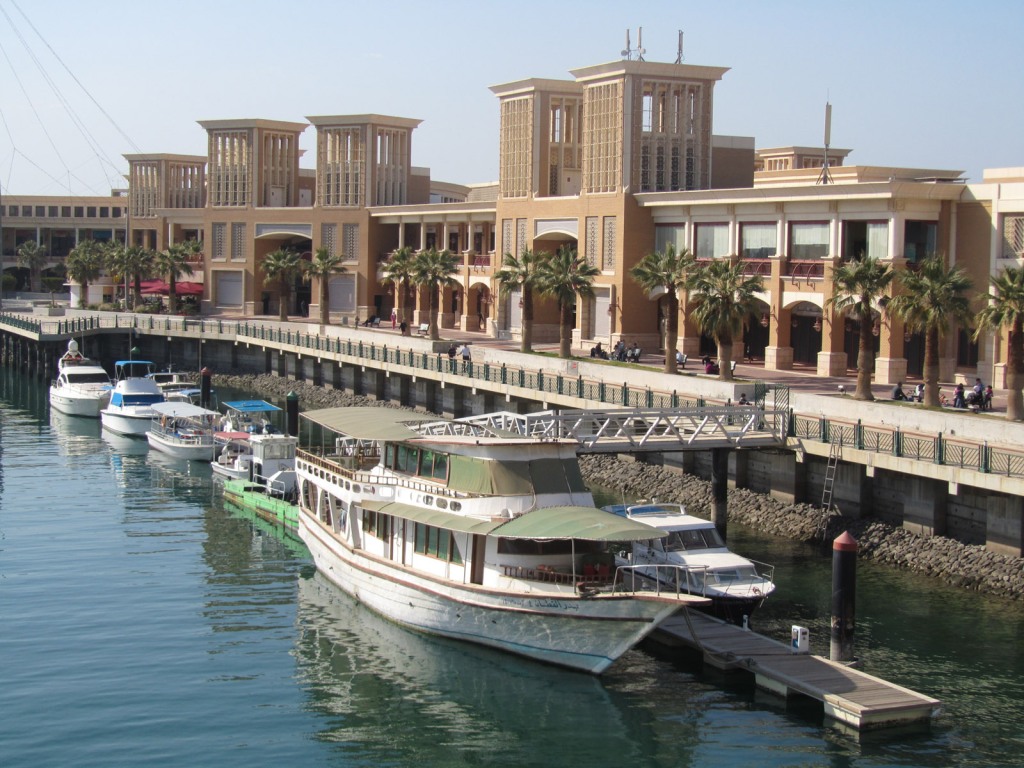

But the mightiest of the Kuwaiti Malls is surely The Avenues on the Fifth Ring Road. Locals gaze in bewilderment at its sudden appearance – “when I were a lad, it were all sand”.
The Arab Fund Building is touted as one of the tourist highlights of Kuwait City, and they’re not wrong that you have to call in advance to arrange a visit. It is the headquarters of the pan-Arab League development institution.


Nevertheless, I did catch a glimpse of some of the Islamic tessellations inside the lobby, as I unsuccessfully tried to blag my way in.
A view of the skyline of Kuwait City from the west in the late afternoon. The tall observation tower is Liberation Tower, which was still under construction at the time of the 1990 invasion.


The Tareq Rajab Museum is spread across two houses buried in the district of Hawalli, and takes effort to find on your own. Tareq Rajab was a collector of Islamic art and artefacts, and owing to the low number of tourists in Kuwait in January, I had the place to myself.
Further south into the suburbs is Al Qurain Martyrs’ House – the last stand of a band of Kuwaitis in the face of an Iraqi onslaught, tragically only four days before liberation. The house was shot and shelled to the extent that can still be seen today, where it stands as a memorial museum.

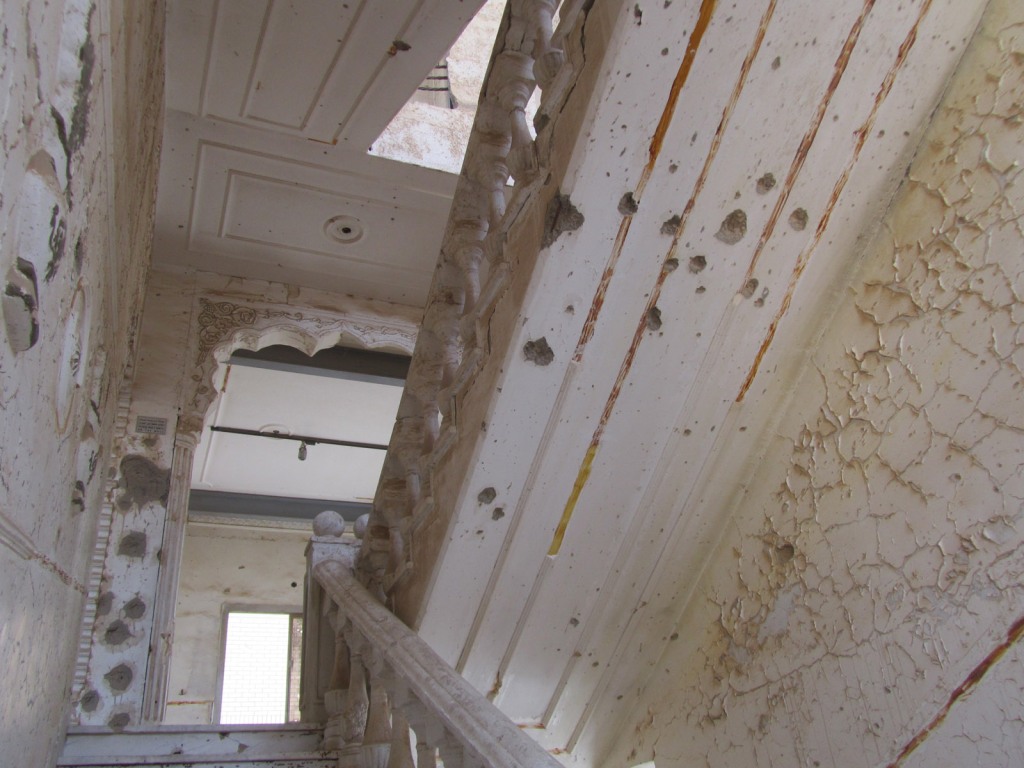
The house had clearly been a pretty nice residence before the siege, it was chilling to see the destruction wreaked upon it. It was all the more disturbing to see the identical neighbouring houses, untouched and still lived in.
Graffiti and a national flag on the wall – “Kuwait is free forever”.


Across the street, the belligerent Iraqi tank still sits menacingly, but slowly rusting away.
Before the twentieth century Kuwait had little concern for invasion, until shortly after the border was set with Saudi Arabia, prompting the construction of the city gates in 1929. This is Al-Maqsab Gate.
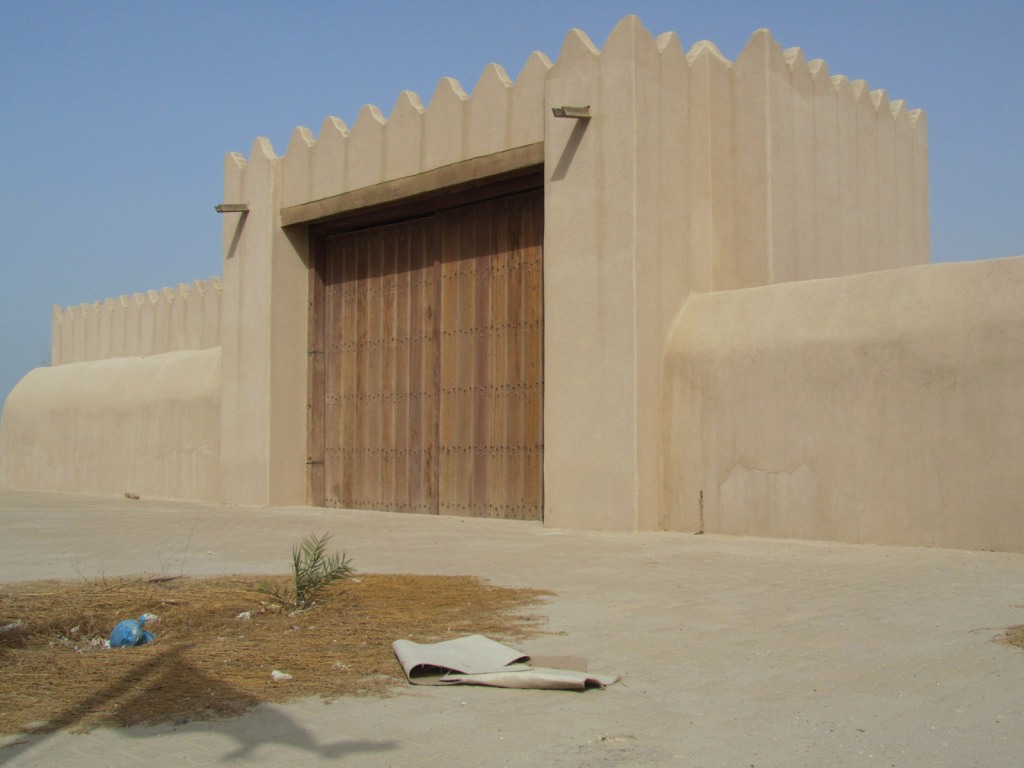

One of very few other old structures in Kuwait is Sadu House, a Bedouin museum on the corniche. There is no longer a historic quarter or similar old town area.
Also set back from the corniche is that expat institution, Casper and Gambini’s where I had a delicious gourmet burger lunch. Unfortunately by the time of my 2023 re-write, it appeared to be permanently closed.


Clock tower and palm trees at Seif Palace, opposite the Grand Mosque on the corniche.
The national flag flying high above Seif Palace itself, the residence of the Emir.


One of the quirkier attractions in Kuwait City, which I discovered purely by chance as I drove past, is the world’s largest wooden ship. The dhow Al Hashemi II was completed in 2001 and serves as a ballroom for the adjoining Radisson hotel, oddly enough. It weighs two thousand tonnes but will never be put to sea, which seems like a bit of a shame.
Inside Al Hashemi II – there were no functions going on so I was free to wander at will and admire the spectacular woodwork.
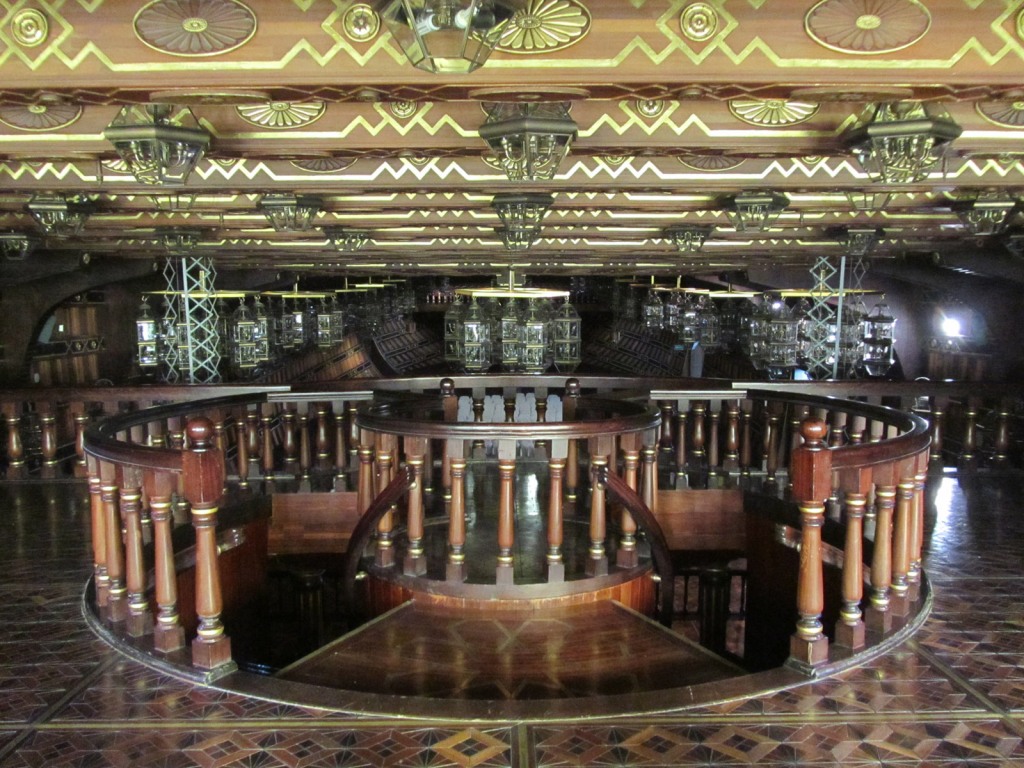

One of my primary points of interest in Kuwait was the National Memorial Museum, effectively the Gulf War Museum. It took three attempts to show up at a time they were actually open, but it was worth the effort. A large mural in the entrance hall depicts the martyrdom of the Kuwaitis at Al Qurain, which I had visited earlier.
The museum is set up as a series of dioramas telling the story from invasion to resistance, occupation, war and liberation. Here the environmental disaster of the oil fires set by the retreating Iraqis is depicted. I remember seeing the smoke from the fires at the time, while living in Dubai over five hundred miles away.
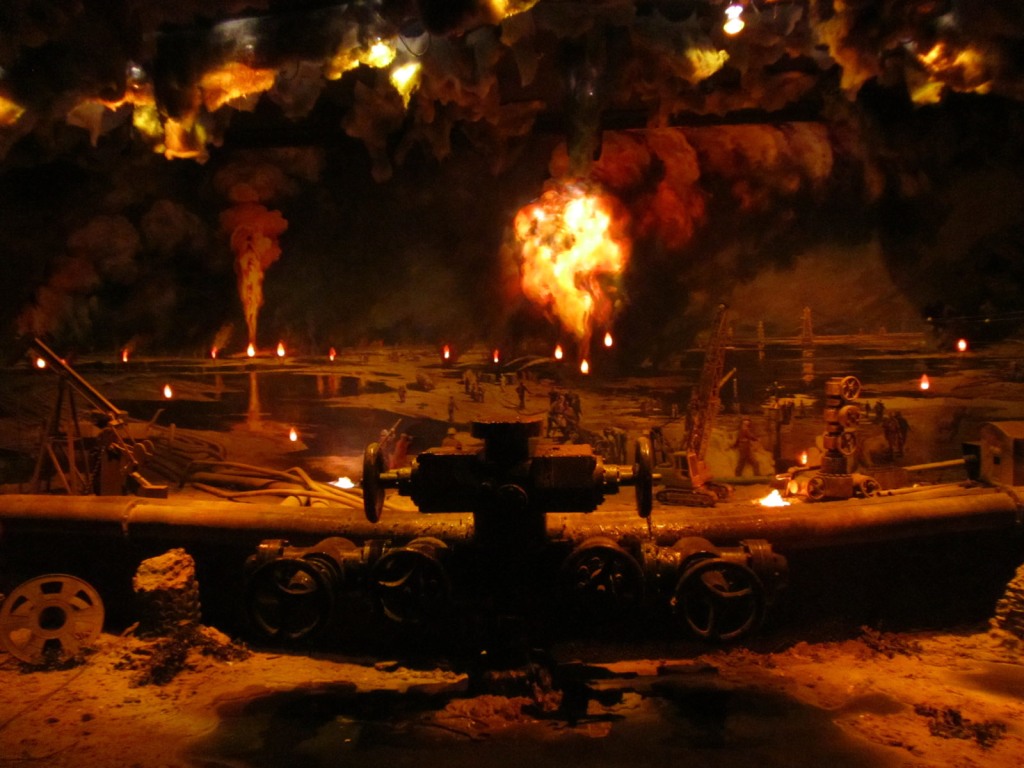

By the exit of the museum, the aggressor Saddam Hussein is represented in effigy buried to the shoulders. Perhaps an indication of how painful the recent memory of the war is to Kuwaitis, is the extent to which the evidence has been comprehensively and almost completely cleared up. This museum and Al Qurain Martyrs’ House are about all that is permitted to remain.
Created 2012 | Updated 2023
